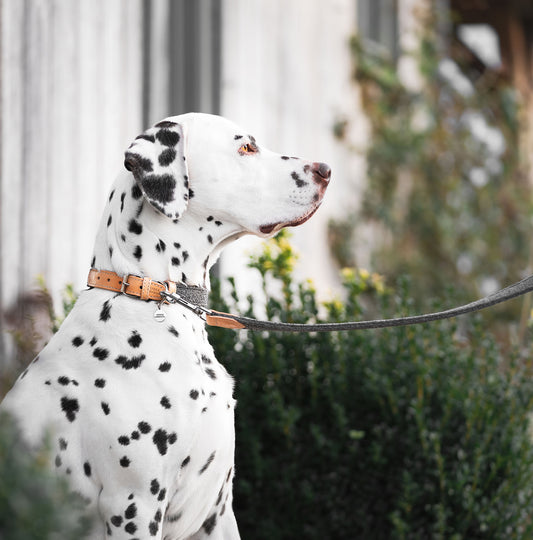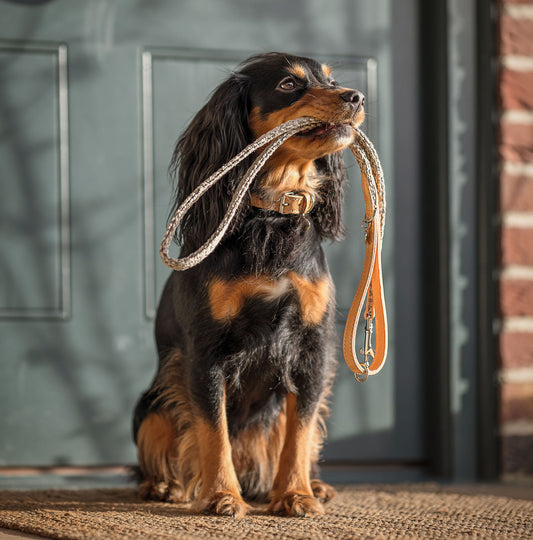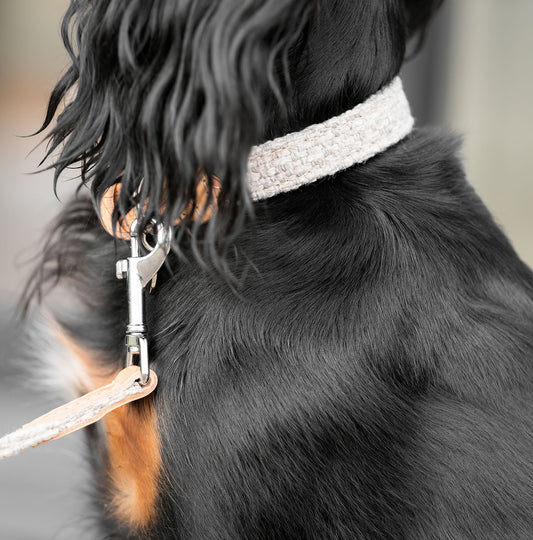As the colder months of the year draw near, cooler days set in and the chance of seeing snow and ice on roads and pavements becomes increasingly likely. When snow falls, it can feel just that little bit more like Christmas, and while your dog may get in the spirit and feel the urge to jump into mounds of snow, it’s important that you’re aware of the potential dangers.
Many dogs require daily walks to alleviate stress, keep them stimulated and reduce feelings of frustration, sadness and boredom. But it can be concerning to continue the daily routine of walking your dog if it’s cold outside and snow is blocking your path. In this blog, we look at the harm snow could cause to your dog, how you can reduce the risks and what you can do to ensure that your furry friend still gets their steps in.
Can Dogs Go Out In The Snow?
Dog's can absolutely go out in the snow, it can be fun for them to play in and a lot of dogs love it. Just make sure to properly dry them off after, especially between their paw pads to help keep them as warm as possible
Can You Walk A Dog In Snow?
It can be a concern that the weather is simply too cold for your canine and walking them in the snow could lead to them becoming ill. As a general rule of thumb, if it’s too cold for you, it’s certainly too cold for your dog, but it doesn’t mean that doggy walks must be strictly forbidden until the snow melts and normality is resumed.
While it’s true that your dog could be negatively affected by cold weather, you should be able to walk them in the snow providing you prepare for the trip out and bear in mind a handful of key considerations.

For instance, before taking your dog for a walk in the snow, you should:
- Microchip your dog - Ensure that your dog is microchipped in case they escape. Although this is always important, it’s even more crucial in colder weather as it can be more dangerous for your dog if they go missing for a long period of time.
- Prepare their pathway - You can melt ice and snow from your door, driveway and the road outside your home to limit the amount of snow they’re exposed to. However, it’s important that you use a product that is pet-safe and non-toxic. Commercial antifreeze, for example, should be avoided as it is likely to cause your dog harm if they attempt to lick it.
- Fit them with a warm coat - Some dog owners believe that a harness or collar is enough heat to keep their dog warm throughout a walk. In fact, while they have more natural insulation than humans thanks to their fur coats, they need just as much protection from the cold. Along with their collar and harness, fit them with a dog coat.
- Offer them water as you would normally - Providing your dog with a coat is a must during colder times of year, but as it can leave them warm, you should also make sure that they don’t dehydrate. A lack of hydration is likely to be the last thing you’d consider when it’s cold, but there’s never a time where your dog won’t need a drink during walks.
- Continue to pick up poo - Unfortunately, some dog owners may see the piles of snow as an opportunity to avoid picking up dog poo. While picking up poos is admittedly an unpleasant errand, it’s your responsibility to do this and refraining from picking up your dog’s doo-doos is only likely to cause further problems. When wet, dog poo will become more runny, leaving the pavement slippery to pedestrians and other dogs.
- Limit your dog’s playtime in snow - Allow your dog to play in the snow but limit this time to avoid the cold from setting in and causing harm. It shouldn’t have much of an impact when snow comes into contact with them, but when the snow begins to melt, it can be reminiscent of an ice bath on their skin.
- Keep them on a lead at all times - Refrain from taking your dog off the lead to prevent any chance of losing them in the snow. As previously stated, a dog can come to more harm if they’re lost in the cold than they might be in warmer periods of the year.
- Steer clear of frozen water - Don’t let your dog near frozen ponds, puddles, lakes or rivers. Not only could they risk drowning if the ice breaks, but significant contact with cold water could also be harmful to them and their paws.
- Watch what they eat - Be extra vigilant over what they could be eating. You’d usually check that your dog isn’t eating objects from the floor such as poo and potentially harmful items and substances, but with snow masking these items, it can be easy to miss something.
- Warm your dog up - Once you return home, wipe away snow and water from your dog’s paws, fur and skin. You should then turn the heating on and wrap them in a blanket to increase their body heat. Then, when they’re warm, remove the blanket to prevent them from overheating.

How Cold Is Too Cold To Walk Your Dog?
You may be wondering when it's too cold to walk your dog, this will vary from dog to dog depending on their age, breed, size and coat. Our pet experts have written an in depth guide on 'When Is It Too Cold To Walk My Dog', which has everything you need to know about winter dog walks in.
Can Dogs Walk In The Snow Without Shoes
In the summer, you need to be careful that the hot pavement doesn’t burn your dog’s paws and cause serious damage. Although this isn’t a problem in the winter, it’s possible that the cold ground could leave their paws sore and at risk of accidents.
For instance, exposure to cold surfaces can cause your dog’s paws to become painful, and if snow and ice gets stuck in their paws, it can be even more uncomfortable and harder to remove.
Another potential danger to your dog’s paws is the salt. Used to defrost roads and pavements, salt is an effective solution, but if it gets stuck to a dog’s paws, it can cause an unpleasant stinging sensation. Not only that, but if your dog licks up this salt, it could damage their insides.
It can be difficult to tell whether or not your dog would benefit from using shoes. If they’re nipping into the garden to answer the call of nature or if you’re taking them for a brief walk and have already checked that the path you’ll be taking is clear, your dog may not need boots.

How Long Can A Dog Walk In The Snow?
Working out how long you can walk your dog in the snow is likely to be based on the specific breed of the dog and the temperature outside.
Providing the temperature is above freezing, a healthy medium or large dog should be able to walk for up to 30 minutes without experiencing any discomfort. As for smaller dogs, walks at this temperature should be limited to between 15 and 20 minutes. If the temperature is below freezing, it would be advisable to keep your dog inside and only walk them once the temperature rises above zero.

































































































